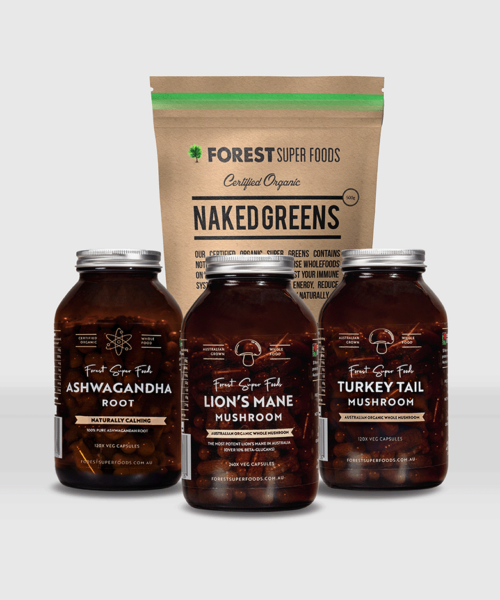Lion’s Mane is an incredible gift from nature that can help our brains to perform at their best… science is only just starting to uncover the incredible benefits contained in this special mushroom.
There are a lot of sellers of Lion’s Mane supplement and everyone has a different theory on which is best.
After 11 years in this industry, I have learnt that we should tamper with nature as little as possible – after all, nature is the one who created this incredible mushroom in the first place.
There are 4 things you should consider as a first time buyer of Lion’s Mane mushroom:
- Is it a whole food or an extract?
- Concerns about heavy metals/pollution
- How is it dried?
- Does it include the mycelium?
1. Is it a whole food or an extract?
Let’s break down what an “extract” is. You take a plant or a mushroom and extract one or two compounds and then suspend those compounds in water or alcohol. This is how you take a solid (ie: a Lion’s Mane mushroom) and make it into a liquid.
Whilst this is cheap to produce, it doesn’t contain the full spectrum of benefits contained within the mushroom. I’m pretty sure we can’t even identify half the active compounds in Lion’s Mane… let alone extract them!
Over thousands of years, this incredible mushroom has evolved to the super food it is today. To me, it is a little arrogant to think we can improve on that further by adding alcohol/water.
What is more, both humans and the mushrooms have evolved together meaning our bodies recognise the mushroom as food. Once you isolate certain compounds it is no longer as readily recognisable by the human body.
That’s why for me I prefer a whole food Lion’s mane supplement. Something that contains the full spectrum of nutrients, vitamins and active compounds (even if we can’t yet identify what half of them are!)
2. Concerns about heavy metals/pollution
Mushrooms are super absorbent. If you ever go out foraging with an experienced person, you will notice they never harvest from the side of the road.
Why?
Because the mushrooms will most likely absorb the pollution from the passing cars. They can also absorb heavy metals from the water.
For me, I wouldn’t feel comfortable eating an imported mushroom, so I won’t sell them when there is Australian grown readily available.
Even if it is “certified organic” I would still be dubious about the growing methods and quality of the water.
Australia has a reputation for the best clean air and clean water on the planet… it’s a no-brainer for me.
3. How is it dried?
Fresh is always best. No matter what you are drying there is always some nutrient loss in the drying process. Our aim is to deliver our mushrooms as close to “fresh” as possible.
How do we do this?
With a technology known as freeze drying. Freeze drying very quickly takes the mushroom to -65 degrees celsius because it happens so quickly it minimises nutrient loss dramatically compared to other drying methods. It’s “snap” dried.
Freeze drying is (almost) nutritionally equivalent to eating the mushroom fresh.
It’s a very expensive process but one that I think is well worth the extra cost.
4. Does it include the mycelium?
Have you heard the claim “mycelium is just filler”? It’s an interesting claim and I am yet to see any evidence that it is true.
The mycelium contains a whole lot of the benefits contained in the mushroom. Just like the roots of other plant materials (think valerian root, ashwagandha root, etc).
The mycelium does not contain hericenones but does contain many more biologically active erinacines (15 identified thus far, A-K, P-S), making for a very strong case to incorporate mycelial into the mushroom supplement.
It becomes obvious that mycelium is not a filler if you do your research… so why do sellers of imported mushroom extracts still insist that it is? Because the farms they buy from overseas don’t bother with the hassle of incorporating mycelium into the finished product.
Have another question about Lion’s Mane mushroom? Please comment below!
Order Lion's Mane Now





